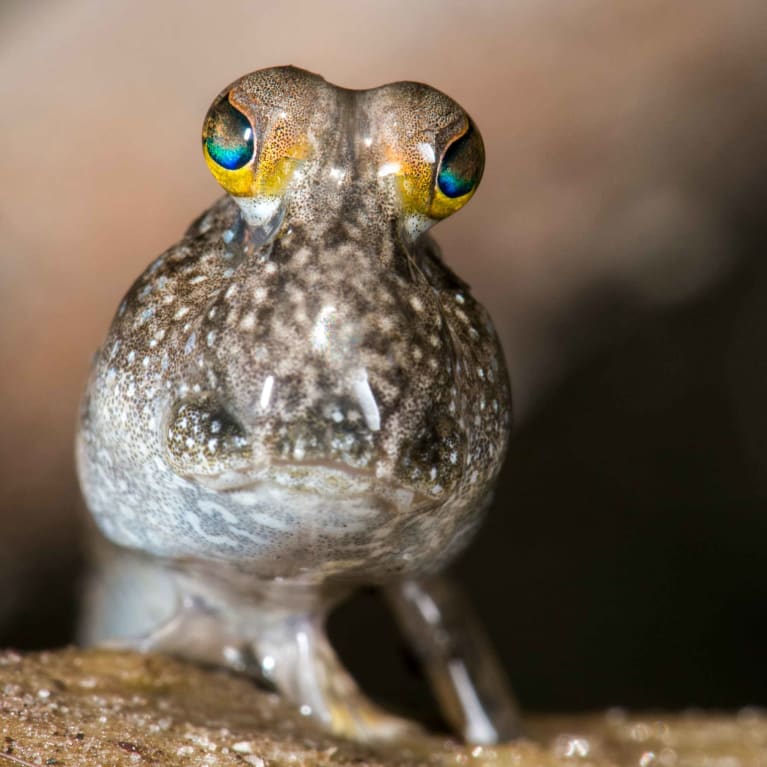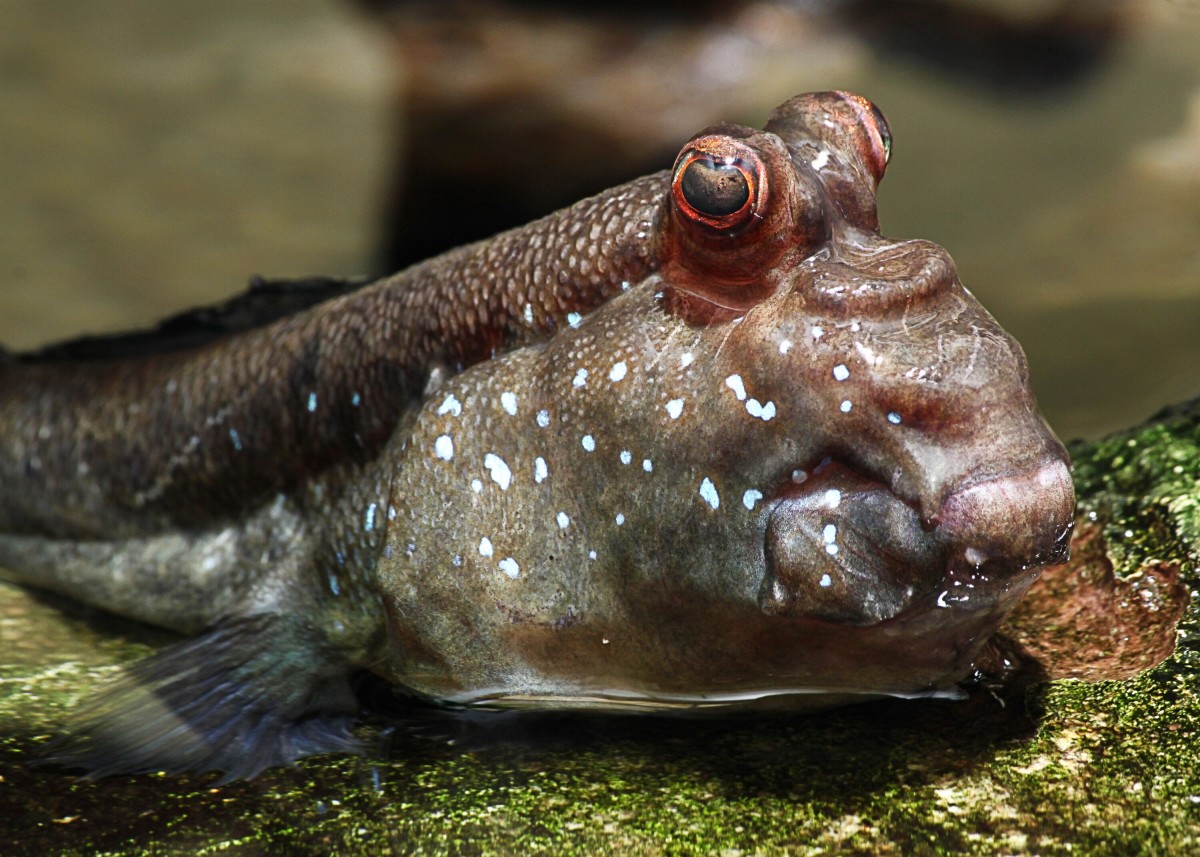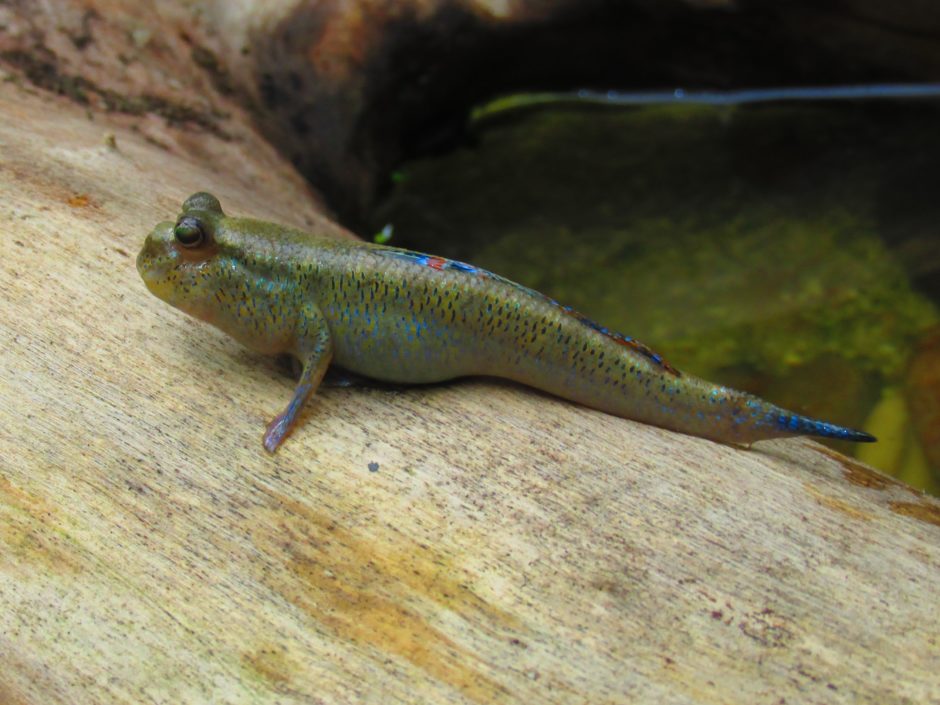Mudskippers, the amphibious fish known for their ability to live both on land and in water, could provide valuable insight into the evolution of blinking in animals. Blinking is a common behavior observed in many species, including humans, but the evolutionary origins of this phenomenon are still unclear.
According to a recent study published in the journal Current Biology, mudskippers have a unique way of blinking that differs from other fish species. Instead of using their eyelids to blink, mudskippers close their eyes by contracting a muscle that runs from their upper jaw to their eye socket. This behavior is similar to that observed in land-dwelling animals, such as mammals and reptiles.

The researchers suggest that this muscle may have evolved in mudskippers as an adaptation to their semi-aquatic lifestyle, allowing them to protect their eyes from drying out while on land. They propose that this muscle may represent an intermediate step in the evolution of eyelids and blinking in animals.
By studying the development and function of this muscle in mudskippers, researchers hope to gain a better understanding of the evolution of blinking and its role in animal behavior. This could have implications for fields such as neuroscience, where blinking is used as a measure of cognitive function and attention.

Mudskippers are also of interest to researchers because of their unique adaptations to living in both aquatic and terrestrial environments. They have evolved a range of behaviors and physiological mechanisms that allow them to survive and thrive in these challenging habitats. By studying these adaptations, researchers hope to gain a better understanding of the evolution of life on Earth and the mechanisms that drive species diversity.
Overall, mudskippers represent a fascinating and important group of animals that could provide valuable insights into the evolution of behavior and physiology in animals. With further research, we may be able to unlock some of the secrets of these remarkable creatures and gain a deeper understanding of the natural world.

In addition to their unique blinking behavior, mudskippers have several other fascinating adaptations that have evolved in response to their semi-aquatic lifestyle. One such adaptation is their ability to breathe air using their skin and the lining of their mouth. This allows them to survive in environments with low oxygen levels, such as muddy tidal flats and mangrove swamps.
Mudskippers have also evolved a specialized pelvic structure that allows them to walk on land using their pectoral fins as legs. This adaptation enables them to move between aquatic and terrestrial habitats, allowing them to access food and escape predators.
Furthermore, mudskippers have modified gills that can extract oxygen from both water and air, allowing them to stay submerged for longer periods of time. They also have a unique digestive system that allows them to extract nutrients from a wide range of food sources, including algae, small invertebrates, and even detritus.

Due to their unique adaptations, mudskippers have become a model organism for studying the evolution of various traits in vertebrates. Researchers have used mudskippers to investigate topics such as the evolution of breathing mechanisms, locomotion, and digestive systems in animals.
In addition to their scientific value, mudskippers are also important for their ecological roles. They help to control populations of insects and other small creatures in their habitats, and they are an important food source for larger predators, such as birds and larger fish species.

Unfortunately, like many other amphibious species, mudskippers are facing increasing threats from habitat loss and degradation caused by human activities. Conservation efforts are needed to protect these fascinating creatures and their habitats, ensuring that they continue to thrive in the wild and provide valuable insights into the evolution of life on Earth.









